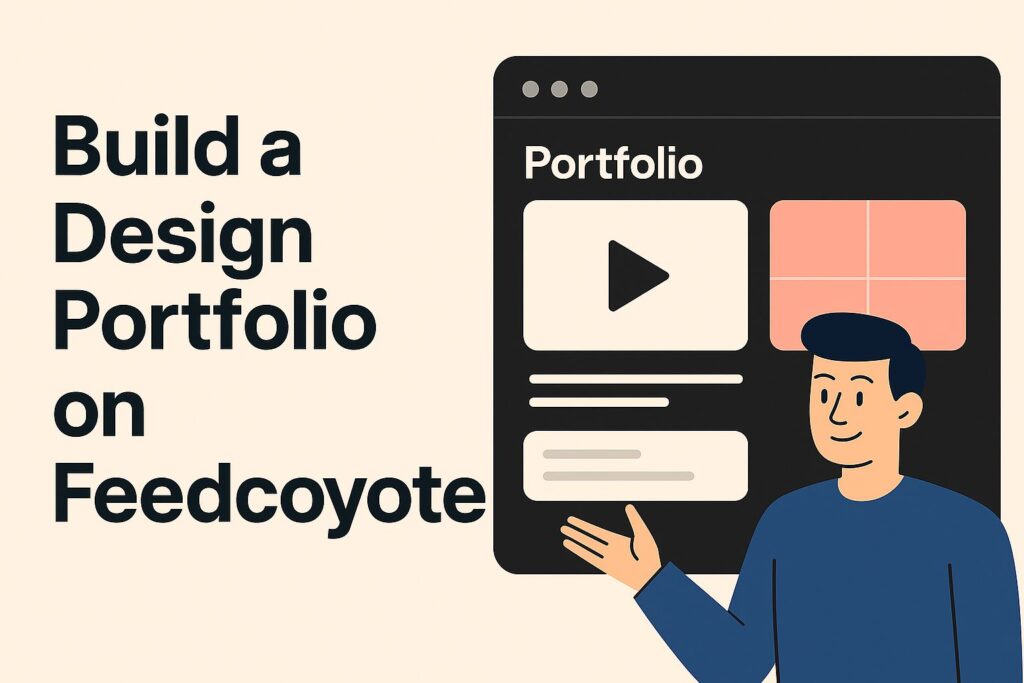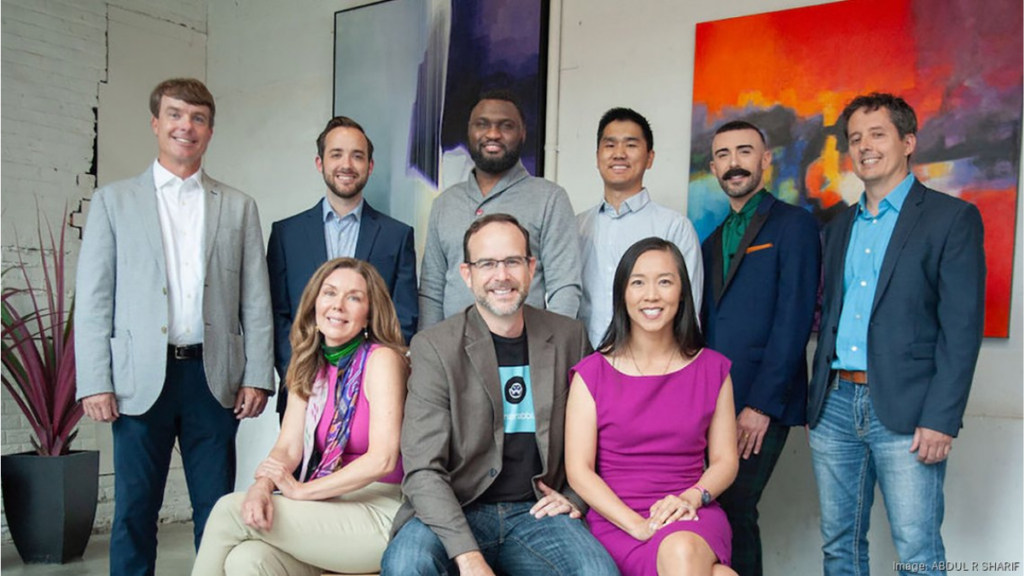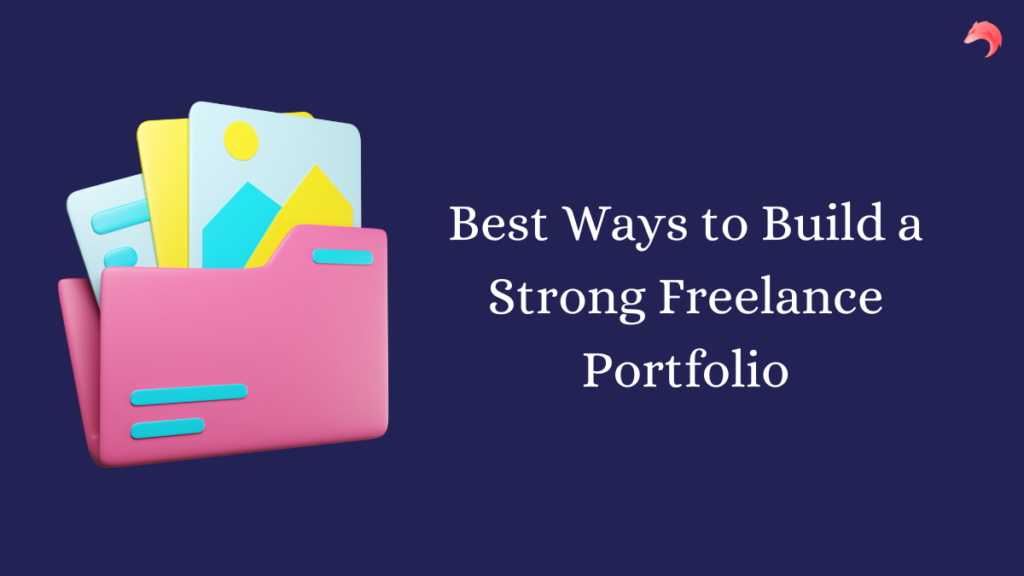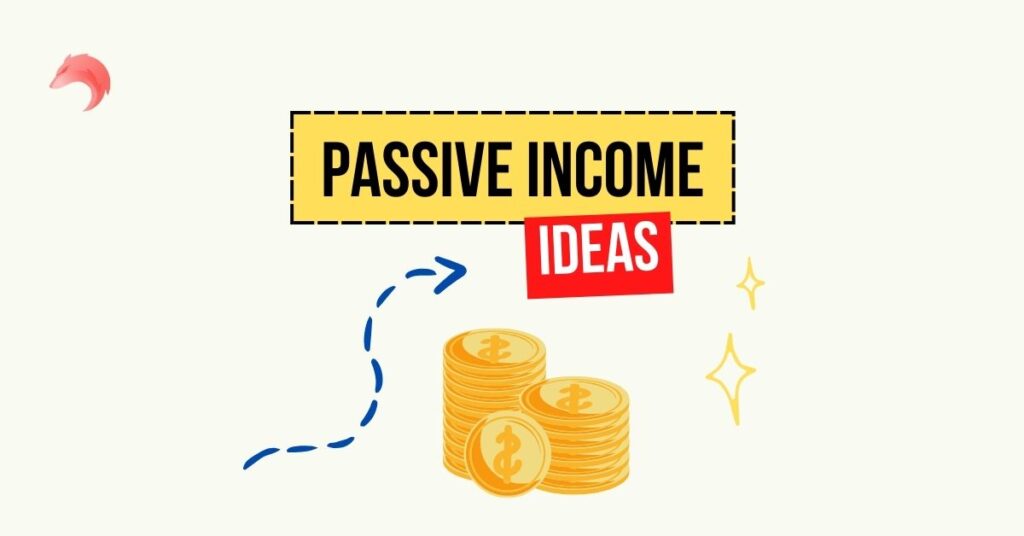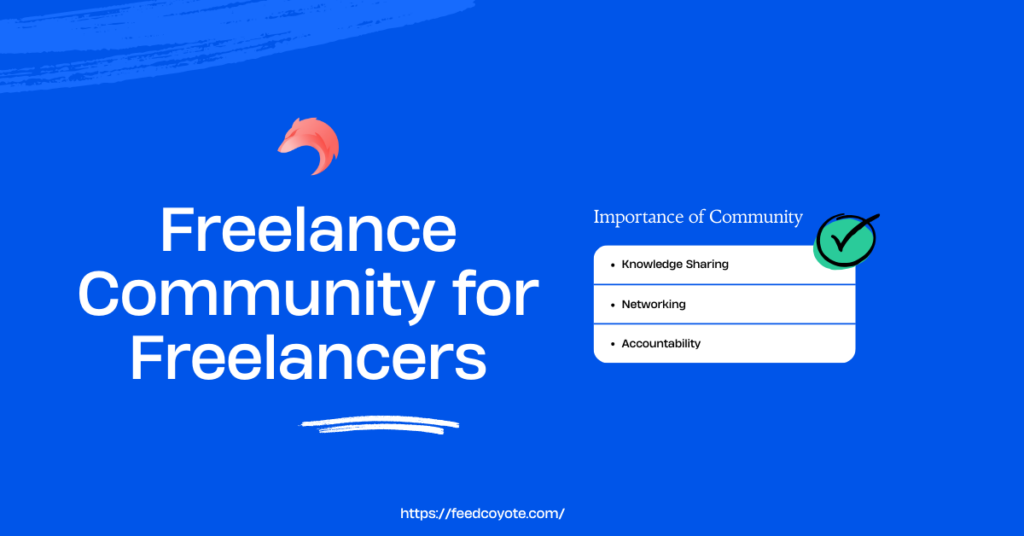As a freelance designer, your portfolio is your most powerful asset. It’s more than just a collection of images; it’s your visual resume, your proof of skill, and your key to unlocking better collaboration opportunities. In today’s collaborative freelance world, your portfolio needs to impress potential partners—like developers, writers, marketers, and other designers you might team up with.
Many designers focus only on aesthetics, missing the chance to tell a compelling story about their process and results, which is crucial for building trust with potential collaborators. Furthermore, scattering your work across different platforms can dilute its impact.
This guide provides a clear, step-by-step approach to building a high-impact design portfolio specifically within Feedcoyote, The Professional Network for Independent Creatives Worldwide. Learn how to showcase your work effectively and leverage your portfolio to find great partners and scale your collaborations.
Why Your Feedcoyote Portfolio Matters
Think of your Feedcoyote portfolio section as a strategic hub for attracting partnerships. It serves two crucial purposes:
- Attracts Project Opportunities: Businesses or lead freelancers looking for design expertise for their projects can see tangible proof of your skills and the results you deliver.
- Attracts Collaboration Partners: Developers needing UI/UX, marketers needing visuals, or writers needing infographics will browse portfolios to find reliable design talent they can team up with. A strong portfolio signals professionalism and competence to potential partners.
Feedcoyote’s structure allows you to present your work with the depth needed to impress fellow professionals.
Building Your High-Impact Feedcoyote Portfolio: Step-by-Step
Creating a compelling portfolio on Feedcoyote goes beyond just uploading images. Follow these steps:
1. Curate Your Best, Most Relevant Work
- Quality Over Quantity: Select 5-10 of your strongest projects. It’s better to show a few exceptional pieces than dozens of mediocre ones.
- Align with Your Niche: If you specialize (e.g., SaaS UI design, e-commerce branding), prioritize projects that showcase this expertise. This helps attract your ideal collaborators.
- Show Variety (If Applicable): If you offer multiple services (e.g., logo design, web design, social media graphics), include strong examples of each to demonstrate your range to potential partners.
2. Optimize Your Visuals
- High-Quality Images: Use clear, high-resolution images, mockups, or screenshots. Ensure they load quickly and look professional.
- Show the Process: Don’t just show the final product. Include images of wireframes, sketches, or different iterations. This demonstrates your thought process, which is valuable to potential collaborators (especially developers or project managers).
- Use Feature Snapshots: Feedcoyote allows for feature snapshots. Use these to highlight key screens, impressive details, or positive feedback from previous partners related to the project.
3. Craft Compelling Project Descriptions (Crucial!)
This is where you tell the story behind the visuals. A great description transforms a picture into a case study, building credibility with potential partners. For each project, answer these questions clearly and concisely:
- Project Title: Use a clear, descriptive title (e.g., “UI/UX Redesign for HealthTech Mobile App,” “Brand Identity for Sustainable Coffee Roaster”).
- The Challenge/Problem: What specific problem did the project aim to solve? (e.g., “Low user engagement,” “Outdated brand image,” “Confusing application navigation”).
- Your Role & Process: What exactly did you do? Briefly explain your steps (e.g., “Conducted user research,” “Developed wireframes & prototypes in Figma,” “Created a comprehensive brand style guide”). Detail any collaboration involved.
- The Solution: How did your design solve the project’s problem?
- The Results/Impact: This is key for demonstrating value to potential partners! Whenever possible, use quantifiable results. (e.g., “Increased user engagement by 15%,” “Reduced task completion time by 20%,” “Received positive user feedback on new interface,” “Contributed to securing project funding with new pitch deck design”).
Tip: Use bullet points in your description for easy skimming. This detailed context is essential for attracting high-value collaborations.
4. Add Relevant Skills & Links
- Link to Live Work: If the project is live (website, app), include the direct link.
- Tag Your Skills: Associate relevant skills from your Expertise tab with each portfolio piece. This helps Feedcoyote’s AI Matchmaking connect you with relevant opportunities and partners.
Leveraging Your Portfolio to Scale Collaborations on Feedcoyote
Your polished Feedcoyote portfolio is now ready to work for you, specifically to build partnerships and scale your business collaboratively.
- Attract Technical & Marketing Partners: Developers looking for UI/UX expertise or marketers needing campaign visuals will actively search designer Portfolios on Feedcoyote. Your detailed case studies showing process and results build trust and make you an attractive partner.
- Find Complementary Talent: Use the “Coyotes” tab to proactively find developers, writers, or marketers whose skills complement yours. Your strong portfolio gives you credibility when reaching out to propose a collaboration.
- Win Collaborative Projects (“Collabs”): When applying for “Collab” opportunities posted by other freelancers needing design support, directly reference specific, relevant projects in your Feedcoyote Portfolio within your proposal. This provides immediate proof of your capabilities to your potential partner.
- Build Your Project Team: Ready to take on a bigger project that requires coding or copywriting? Your portfolio helps you attract the best talent when you post your own “Collab” seeking partners. High-quality collaborators want to work with other high-quality professionals.
Managing Your Collaborative Design Projects
Once your portfolio helps you secure a collaborative project, Feedcoyote provides the tools to manage it effectively with your partner(s):
- Clear Agreements: Use the Contract feature to define scope and deliverables between collaborators.
- Organized Workflow: Use the Task Manager to assign design and development tasks, track progress, and manage shared deadlines visually.
- Contextual Feedback: Use Task Comments and File Sharing for seamless design handoffs, feedback rounds, and version control, keeping all communication tied to the specific work item between partners.
For freelance designers, a strategic portfolio is essential for growth within a collaborative ecosystem. By building a detailed, results-oriented portfolio directly within Feedcoyote, you create a powerful asset that attracts not only project opportunities but also the high-caliber collaborators needed to scale your business.
Showcase your best work, tell compelling stories about your impact, and leverage Feedcoyote’s network and tools to move beyond solo projects and into the rewarding world of shared success.
Ready to build a portfolio that attracts great partners? Optimize your Feedcoyote profile today and start showcasing your design expertise to the community!

